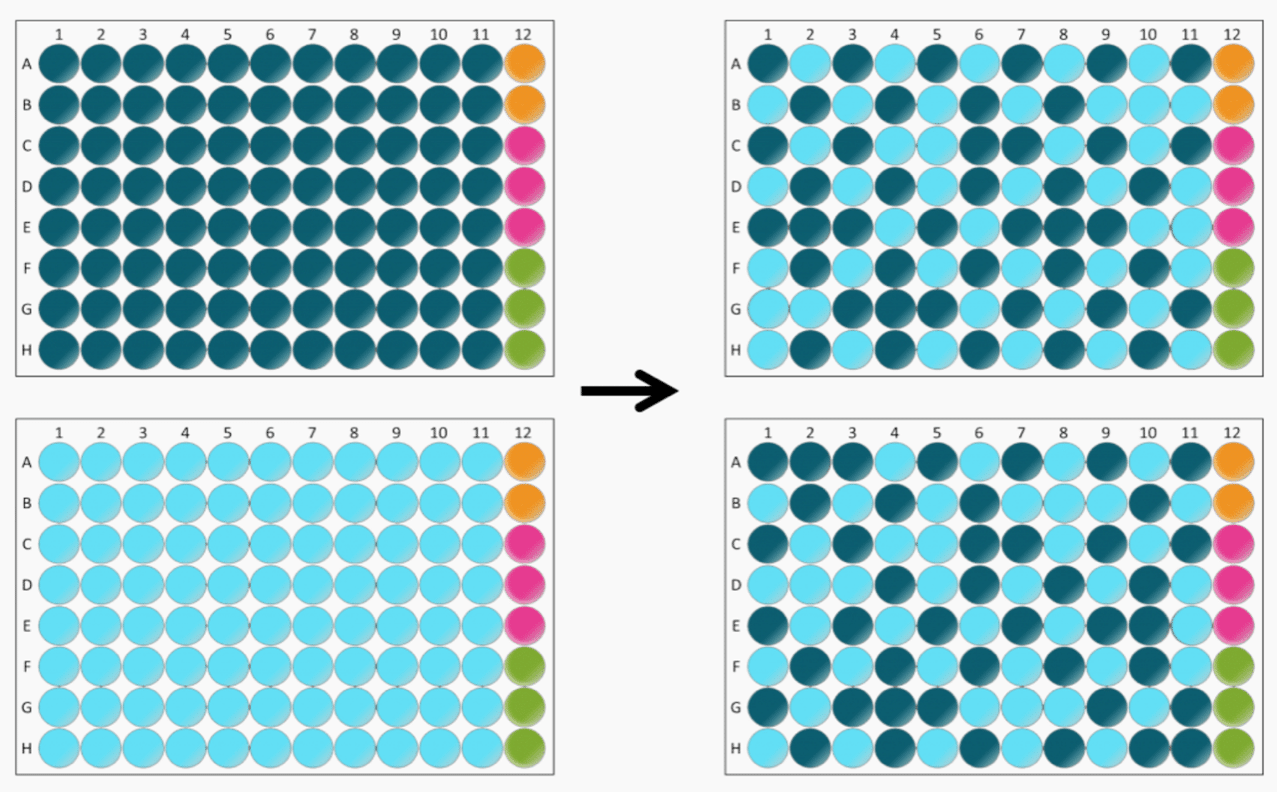Yes. Samples need to be randomized within every plate and also to be balanced across multiple plates for all Olink Explore projects. Samples in a longitudinal study that are collected from the same individual at different time points should, if possible, all be included on the same plate to further reduce variation in the data. The individuals should then be distributed so that the remaining experimental variables of interest are evenly distributed across plates. For further information please see below.
Why do we recommend sample randomization?
Correct sample randomization will empower your study and minimize the risk of introducing any bias that can confound downstream analyses. The purpose is to make sure the technical variation is not mixed with the biological variation being investigated.
Olink applies Intensity normalization to the final NPX data as default for all studies where samples are randomized.
If samples cannot be properly randomized intensity normalization should not be applied to your data set. Olink instead recommends using reference sample normalization by including the same set of 8-16 samples on each plate. See more in our Data normalization FAQ.
Definition of sample randomization
When a study is well randomized the experimental variables can be considered to be evenly distributed across each plate, as well as between the plates of a larger study. What variables to randomize for should be decided for each study as these vary with the study purpose. Variables to randomize for can include e.g. study groups, treatment, sampling time points or demographics. If randomization is not performed, the normalization might remove true biological variation that otherwise could have been identified.
How to randomize your samples
The simplest way to randomise your samples is to use a random number generator. Assign a random number to all your samples, sort them according to the random numbers and place the samples accordingly in your plate or sort your tubes in the given order.
There are also more advanced ways of randomizing your samples as well as some online tools that might be of assistance. If you cannot randomize your samples yourself Olink Analysis Service can help with this.
Please note that the randomization should be evaluated so that by chance some experimental variables were not placed on e.g. one sample plate.
Samples in a longitudinal study that are collected from the same individual at different time points should, if possible, all be included on the same plate to further reduce variation in the data. The individuals should then be distributed so that the remaining experimental variables of interest are evenly distributed across plates.
For complex studies, such as cross-sectional studies with many groups or several important covariates, a more complex randomization plan might be required. For questions or further recommendations on how to randomize your project, please contact support@olink.com
Optimal randomization of one plate of samples:
For studies with one plate of samples or less (n≤88), randomization of the samples will make the quality control process of the data more robust as technical variation can be more easily identified.

Optimal randomization of studies with more than one plate of samples
For studies with more than one plate of samples (n≥89) unequal distribution of the samples across plates can remove true biological variation following normalization.
